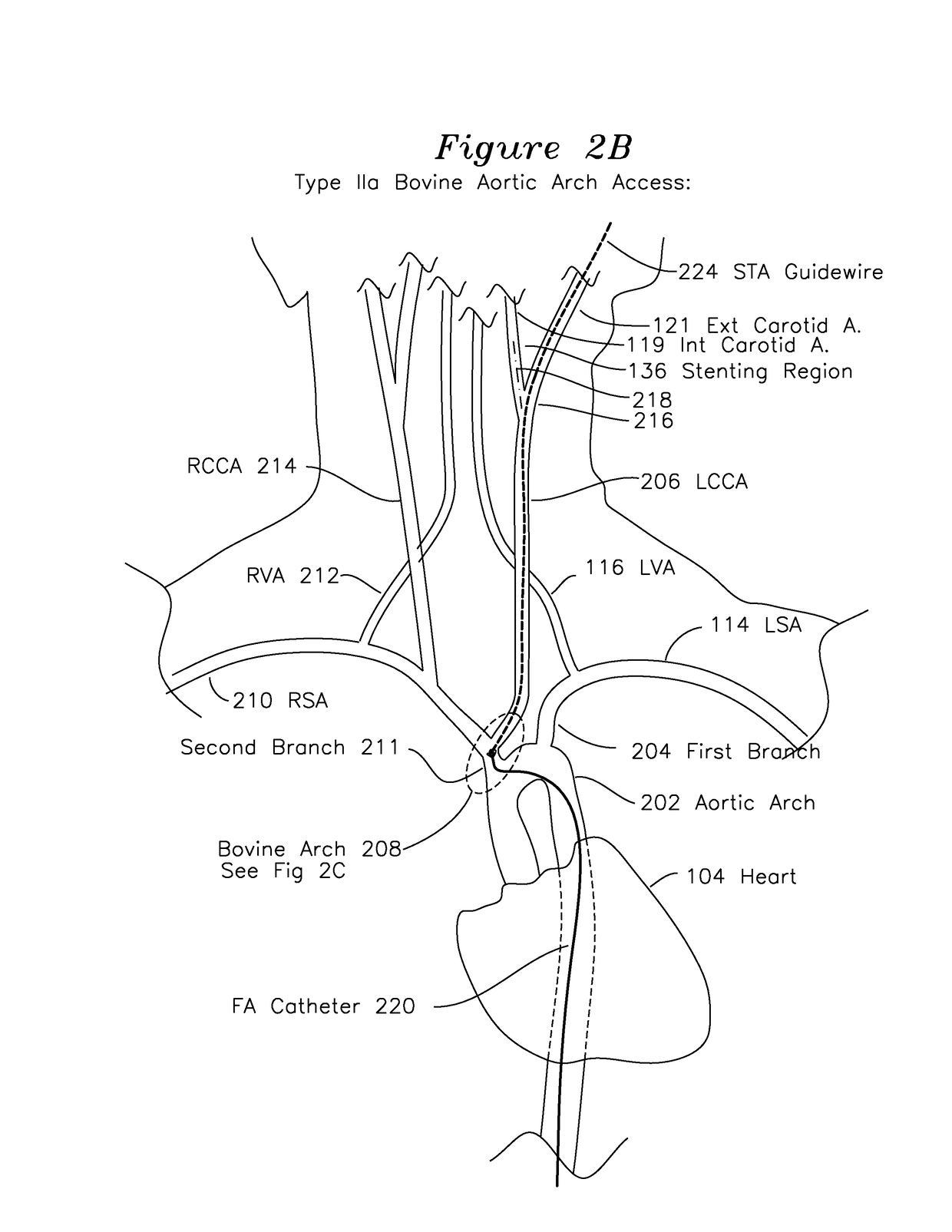Method and apparatus for percutaneous superficial temporal artery access for carotid artery stenting
a carotid artery and percutaneous technology, applied in the field of imaging devices, can solve the problems of the likelihood of an undesired exit puncture of the tortuous vessel, and achieve the effects of reducing procedural risk, reducing procedure time, and improving patient safety
- Summary
- Abstract
- Description
- Claims
- Application Information
AI Technical Summary
Benefits of technology
Problems solved by technology
Method used
Image
Examples
Embodiment Construction
[0044]FIG. 2A illustrated the difficulty of gaining access to the internal carotid artery using the femoral artery and guiding through the sharp bends of a hostile aortic arch with a type II-A bovine variation.
[0045]FIG. 2B shows a first step in gaining stenting access to the left internal carotid artery (LCA) 119 by first inserting an STA guidewire 224 with a distal head or knob which has an increased diameter near the distal end compared to the guidewire diameter, and which provides an engagement volume for the FA catheter 220 to encircle and grab, as will be described later. The STA guidewire is introduced through a needle, such as a 21 gauge needle (not shown) having an inner diameter of 0.018 inch or more, and the STA guidewire diameter may be in the range of 0.014 to 0.016 inch with the distal knob having a diameter in the range of 0.017 to 0.018 inch, and with clearance to fit within the inner diameter of the needle. Preferably, the guidewire is 0.016 inch, and the knob is 0....
PUM
 Login to View More
Login to View More Abstract
Description
Claims
Application Information
 Login to View More
Login to View More - R&D
- Intellectual Property
- Life Sciences
- Materials
- Tech Scout
- Unparalleled Data Quality
- Higher Quality Content
- 60% Fewer Hallucinations
Browse by: Latest US Patents, China's latest patents, Technical Efficacy Thesaurus, Application Domain, Technology Topic, Popular Technical Reports.
© 2025 PatSnap. All rights reserved.Legal|Privacy policy|Modern Slavery Act Transparency Statement|Sitemap|About US| Contact US: help@patsnap.com



